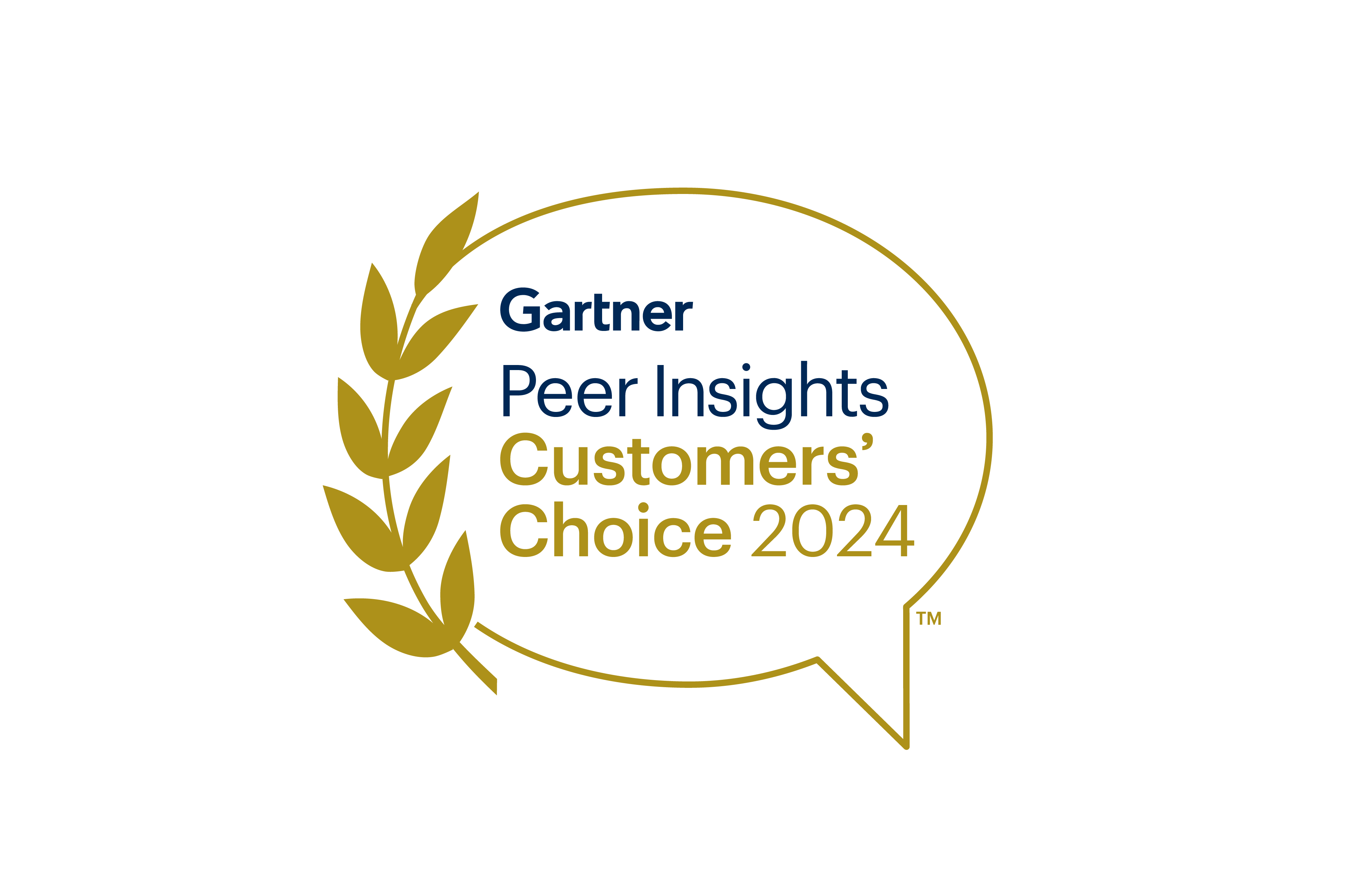We cannot read every individual’s mind, but there is a means of knowing whether your employees are truly engaged and flourishing in your workplace.
Employee engagement surveys are only one of the methods you can use to move beyond sheer guesswork and know what your employees really feel about your organization. As per a 2025 Report, 56% of organizations report having achieved a positive ROI from investments in employee engagement programs.
They can help you understand:
- Are they motivated, productive, and happy?
- How engaged do they feel with the company culture, team members, and work?
- Are they likely to stay with your organization for the long term?
However, employee engagement is not as simple as asking your staff to complete a questionnaire. To achieve real change, organizations need to ask the right questions, guarantee anonymity, process results properly, and, most importantly, follow through on the feedback received.
In this guide, we’ll take you through eight steps to running successful employee engagement surveys, from setting your objectives to taking action based on facts. By the end, you’ll have a blueprint to build effective surveys that drive employee satisfaction and create a supportive workforce.
Suggested Read:
Guide to Evergreen Employee Engagement in Your Company
What is an Employee Engagement Survey?
An employee engagement survey is a detailed questionnaire that is designed to measure employees’ commitment, motivation, and overall connection to their workplace. These surveys focus on how employees feel about their roles, leadership, work environment, and company culture.
The aim is to collect honest views through the combination of multiple-choice, Likert scale, and open questions, as well as one-to-one discussions, to collect quantitative and qualitative information.
Collecting such feedback helps measure levels of engagement, identify areas of concern, and enhance morale and productivity.
Why Should You Conduct Employee Engagement Surveys?
In most organizations, the management and human resources teams think everything is fine because they pay attention to performance management and not team engagement.
This implies that if there is disengagement or discontent among employees, it continues to fester until it is too late to make things right.
Based on Gallup’s 2023 State of the Global Workplace on training! If your training budget isn’t this generous, tracking and controlling employee turnover can help you prevent this cost from going off the charts. With every employee onboarding, you have to incur significant training costs which can only be controlled by retaining old employees.
Based on Gallup’s 2023 State of the Global Workplace findings, $8.9 trillion is lost in the global economy due to low engagement. 62% of employees in the survey reported not feeling engaged at the organization, with 15% feeling actively disengaged.
By conducting employee engagement surveys regularly, organizations can get direct inputs from the employees, helping them measure employee satisfaction, motivation, and commitment, which are key drivers of productivity and retention.
Conducting these surveys enables you to:
- Identify Strengths and Weaknesses: Determine areas where your organization is strong and where it is weak.
- Improve Retention: Gain direct feedback from your employees and tackle the root causes of employee turnover to eliminate them in the first place.
- Boost Productivity: Know what drives employees and streamline workflows accordingly based on feedback.
- Enhance Company Culture: Create a constructive and inclusive culture where every employee feels heard and encouraged.
By adapting based on employee feedback, you build trust and show your team that their views matter. This makes them feel a sense of belonging and facilitates change in the organization for the better.
8 Steps to Conduct Effective Employee Surveys
To maximize your employee engagement surveys, the most important thing is to have the right strategy and pose the right questions. Here are eight steps to help you conduct employee engagement surveys effectively:
Step 1: Define Your Survey Goals
A survey without well-established goals can lead to irrelevant data, misinterpretation, and wasted effort.
So, the initial step is to know why you are carrying out the survey and what you wish to know. What particular ends do you want to meet? What data do you seek to discover? Bring your survey objectives into direct alignment with your higher business and HR goals.
Also, ensure that your goals are measurable and actionable. For example, instead of broad objectives like “improve morale,” aim for specific targets with clear OKRs such as “increase employee satisfaction scores by 10% in the next quarter” or “reduce employee turnover by 5% in the coming year.”
Clearly defined goals will guide your question design, analysis, and subsequent action planning, leading to a more focused and impactful survey process.
Step 2: Choose the Right Survey Type
Choose the right survey type. There are different employee engagement surveys, each designed to serve distinct purposes, and the choice depends on your organization’s specific needs and goals.
Some of the employee engagement survey types include:
- Annual Surveys: These surveys give an in-depth look at the engagement of employees, providing a holistic view of the workforce’s sentiment. They are often carried out on an annual basis and touch on a wide range of subjects.
- Pulse Surveys: Quick, regular, and brief surveys that give real-time feedback about employee sentiment and morale. These are best for tracking current trends and responding to new issues.
- Lifecycle Surveys: These surveys are conducted at specific points in the employee lifecycle, such as onboarding, performance reviews, or exit interviews. They give useful feedback at key moments and assist in determining areas for improvement in the employee experience.
- Ad-hoc or Always-on Surveys: These may be additional always-on surveys that are available to employees at any time or specially created surveys, e.g., DEI (Diversity, Equity, and Inclusion) or work-life balance feedback.
Choosing the right survey type ensures that you gather the most relevant and actionable data for your organization.
Step 3: Craft Clear and Effective Questions
The success of an employee engagement survey depends largely on the questions you ask. Poorly worded or ambiguous questions can lead to confusing data, while well-structured questions provide actionable insights.
To help create an impactful employee engagement survey:
- Keep Questions Clear and Concise: Employees should understand the question without overthinking. Avoid jargon and complex phrasing.
- Be Specific and Actionable: Instead of asking, “Do you feel valued?” ask, “Do you feel recognized for your contributions by your manager?”
- Use a Mix of Question Types: Different formats help capture diverse perspectives. These can include Likert Scale Questions (e.g., On a scale of 1-5, how satisfied are you with your work-life balance?), Multiple-choice questions (e.g., Which benefits do you value the most?) or Open-Ended Questions (e.g., What’s one thing we could do to improve your work experience?)
- Avoid leading or overly complex questions: A question like “How great is our company culture?” assumes a positive view. Instead, ask “How would you describe our company culture?”
Step 4: Ensure Survey Anonymity & Confidentiality
A major worry among employees participating in an engagement survey is whether their responses remain anonymous.
If employees feel that their feedback could be recorded, they may withhold honest opinions or provide overly cautious responses. To get genuine and useful insights, organizations must prioritize confidentiality.
Follow these best practices:
- Use Third-Party Survey Tools: Check out platforms like Culture Amp, SurveyMonkey, or PeopleStrong that offers built-in anonymity features and HR dashboards ensuring that individual responses remain private.
- Limit Identifiable Questions: Avoid questions that could pinpoint individuals, such as “What is your exact job title?” or “Which department do you work in?” (unless the department has a large number of employees)
- Aggregate Results, Not Individual Responses: Share team-wide trends rather than specific answers. This ensures that survey responses cannot be traced back to individual employees.
- Communicate Clearly About Anonymity Reassure employees when taking anonymous feedback that no managers or HR personnel will have access to raw data. This reassures them to provide real answers.
Step 5: Communicate the Survey Effectively
Even the best-designed employee engagement survey won’t be effective if employees aren’t aware of it or don’t understand its purpose. Clear and strategic communication is essential to drive participation and ensure that employees take the survey seriously.
So use a multi-channel strategy to engage all employees, such as email, internal meetings, and your intranet. You can follow the 3x3x3 communication model: communicate three times before, during, and after the survey. Having a consistent approach ensures that employees are kept informed and involved throughout.
Additionally, set clear expectations to help gather more feedback by telling:
- Who should participate? (All employees, a specific department, etc.)
- How long will it take? (5-10 minutes for greater engagement)
- When will the survey close? (Provide a strict deadline with reminders)
- What happens next? (Describe when results will be published and how changes will happen.)
This reinforces that the survey is a chance for employees to help make positive change and that their opinions are important.
Step 6: Drive Participation & Avoid Survey Fatigue
A common challenge with employee engagement surveys is low participation rates and survey fatigue, when employees feel overwhelmed by too many or overly long surveys. To get the most honest and useful feedback, it’s essential to increase participation while ensuring that employees don’t feel burdened.
To boost participation:
- Establish a Realistic Target for Participation: Strive for a 70-80% response rate for data accuracy. Announce this goal to employees to motivate collective participation.
- Keep Surveys Short & Relevant: Ensure that your surveys last no longer than 10-15 minutes, and do not include any unnecessary or repeated questions.
- Incentivize Response Without Making Them Feel Forced: To engage more participants, you might have Raffles or Giveaways giving the respondents an opportunity to win a little prize for answering the survey. Also, give some minor perks like complimentary coffee, snacks, or a longer break.
- Harness Leadership & Peer Pressure: Make top leaders and managers personally endorse participation in surveys.
Step 7: Analyze Results & Identify Key Insights
Collecting survey responses is just the beginning. To improve employee engagement, organizations must analyze the data effectively, identify trends, and uncover actionable insights.
To get the best from your employee engagement surveys:
- Use data visualization tools to highlight trends and patterns in the feedback. Look for correlations between different questions and identify areas where employee sentiment is particularly high or low.
- Pay close attention to patterns in feedback across different employee groups, such as departments, tenure, or demographics.
- Prioritize issues based on their frequency and potential impact on the organization.
- Focus on identifying actionable insights that can be translated into concrete strategies for improvement.
Remember, the goal is not just to collect data but to use it to drive meaningful change.
Step 8: Take Action & Follow Up
Gathering and comparing employee input only has value if it creates change. The last and most important part of having a successful employee engagement survey is to follow through on taking action and informing employees. Employees will disengage and distrust surveys if this isn’t done.
Share findings honestly and openly with employees, emphasizing both the positives and improvement areas.
You can even establish a definitive timeline for making changes from the survey comments and monitor progress on a regular basis. Report back to employees, illustrating that their comments matter and are followed through on.
This follow-through is key to establishing trust and momentum. By demonstrating to employees that their voice counts, you reinforce a culture of ongoing improvement and involvement.
Conclusion
Employee engagement surveys are a strategic imperative for organizations that want to develop a successful and productive workforce. With a structured platform for employees to voice their opinions and concerns, these surveys offer invaluable insights that can drive meaningful change.
To maximize the benefits of your engagement surveys, having the right HR technology partner is key. A platform like PeopleStrong can help you streamline survey creation, analyze feedback with AI-powered insights, and take data-driven actions that foster real change.
Want to take employee engagement in your organization to the next level? Start by implementing a well-structured survey and take the first step toward a more connected and engaged workforce.
FAQs
How often should you conduct employee engagement surveys?
It varies based on your company’s objectives and the nature of the survey that is being conducted. For instance, annual engagement surveys are carried out once a year in order to give a general overview, and pulse surveys typically take place every quarter or monthly to monitor progress in real time. A combination of both gives ongoing feedback and improvement.
What types of questions should be included in an engagement survey?
Employee engagement surveys should ideally touch upon multiple aspects, such as job satisfaction, company culture, effectiveness of leadership, career growth, and work-life balance. For this, you can use a mix of Likert scale questions, multiple-choice, and open-ended answers, which guarantees comprehensive and actionable feedback.
Should employee engagement surveys be anonymous?
Yes, anonymity encourages employees to provide honest, candid feedback without fear of repercussions. Using a confidential survey platform ensures privacy and builds trust in the process.
How can you increase employee participation in surveys?
To boost participation in employee engagement surveys:
- Communicate the purpose of the survey clearly.
- Keep it short and relevant (avoid survey fatigue).
- Provide incentives like small rewards or public recognition.
- Show employees how feedback leads to action so they feel their input matters.
What are the best tools for conducting employee engagement surveys?
There are many tools available to collect employee feedback and generate analytics from these responses. However, we recommend using HR platforms like PeopleStrong, which help companies create custom surveys, analyze responses in real time, and use AI-powered insights to understand what employees truly feel. This turns feedback into meaningful improvements, making it easier for your leadership team to boost engagement and build a better workplace.












